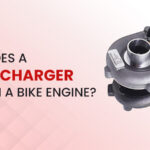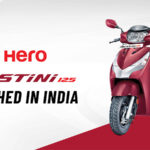V-twin engines have been an essential part of motorcycles for over a century in terms of their design; the configuration and characteristic features that exist within them come in handy and are enjoyed to this day by riders. Let’s go over some specific points about these advantages:
Distinct Sound and Character
One thing that defines a V-twin engine is the different and distinct sound and feeling related to it. Its arrangement is uneven due to the configuration of the V, which gives the exhaust note a deep, rich, “potato potato” tone.
Many riders find the sounds to be deeply appealing. Though, it’s not all about aesthetics. That signature sound has become so much part of the culture of motorcycles! The irregular firing intervals generate a pulsating, rhythmic feel that most riders describe as more exciting and emotionally appealing than other configurations.
Torque Characteristics
However, the most practical advantage of V-twin engines is torque delivery. Usually, V-twins make powerful low-end and mid-range torque, which translates well into good real-world rideability. This characteristic comes from a few factors:
The comparatively long V-twin design stroke helps produce strong torque at lower RPMs. The long-stroke large displacement pistons create a considerable amount of rotating mass. This adds to the engine’s powerful pull. In addition, the firing order of a V-twin keeps power delivery steady across the rev range. It makes the bike much more accessible for riding conditions in everyday situations.
The torque-rich nature makes V-twins well-suited for cruising, touring, and riding. The rider will not have to shift gears to maintain momentum constantly. Due to its strong torque, the engine can easily cruise in higher gears at lower speeds. This might be advantageous when carrying some luggage or passengers, as the engine is strong enough to easily handle additional load without struggling.
Compact Design Advantages
The V-configuration provides remarkable packaging benefits for motorcycle designers. Engineers can build up a relatively compact engine for a motorcycle frame when the cylinders are in the V-configuration instead of inline.
Since the engine’s weight can be mounted lower in the frame, it leads to better mass centralization, which improves handling and makes it easier to maneuver around. The V-configuration allows designers to maximize the wheelbase length without affecting other geometrical considerations of the motorcycle.
Some V-twin designs, especially those with narrow V-angles, can be made relatively narrow, improving aerodynamics and making the bike easier to manage at low speeds. The narrowness also benefits riders in reaching the ground with their feet when the bike is stopped.
Cooling Efficiency
V-twin engines often boast excellent cooling qualities, especially with air-cooled models. There is a lesser need to explain why, in V orientations, air can strike the two cylinders and that this results in better uniformity of temperatures in the running cycle, especially for air-cooled engines, which require efficient heat dissipation for longevity and performance.
Another point is the provision of inter-cylinder spacings, which assists in counterbalancing the effect of concentrated heat, an issue noted to affect inline configurations. When such thermal management improvements occur, a good and more reliable performance is achieved with the engine while performing its functions. Therefore, it’s able to do so despite changing conditions.
Mechanical Balance and Vibration Characteristics
V-twins are all about vibration. This is not a weakness. The engine layout provides a certain kind of vibration that riders often enjoy and find charismatic. Modern V-twins usually comprise advanced balance shafts and mounting systems that help manage unwanted vibrations while preserving the engine’s distinctive feel.
The natural primary balance of a V-twin, especially in 90-degree configurations, is superior to some other engine layouts. This achieves a good mechanical balance of an engine without adding any excess complexity to engine design.
Maintenance Considerations
V-twin engines are well-maintained and have good access to most components, especially valves and general service. The cylinder arrangement generally allows mechanics access to the essential components without extensive disassembly of the motorcycle. This provides reduced maintenance costs and easy DIY service if you prefer to work on your bikes.
Many V-twin designs are rather simple, both air-cooled and other types. This makes such engines relatively reliable in the long run if properly taken care of. Fewer parts reduce the number of potential points of failure. An advanced V-twin design has withstood the tests of time through many decades of use in motorcycles.
Versatility in Application
V-twin engines have represented exceptional versatility in different motorcycle categories. Although V-twins are usually associated with cruisers and touring bikes, it has proven successful in:
- Because of their high torque capability, sport bikes can deliver great acceleration out of turns.
- Adventure motorcycles are essential for off-road environments because of their advanced design and strong low-end torque.
- Custom motorcycles are most popular among builders because of their looks and sound.
- Street motorcycles attract urban motorcyclists through their performance and character.
Cultural and Historical Importance
V-twin has a very strong impact on motorcycle history and motorcycle culture. Associating themselves with legendary brands and fantastic bikes has made intense emotional contact between such riders. History adds value beyond technical capabilities, making motorcycles from the V-twin-powered line appealing!
Fuel Efficiency Potential
When properly designed and tuned, the V-twin offers good fuel efficiency, especially in touring applications. Their strong low-end torque allows relaxed cruising at lower RPMs. The strong low-end torque allows for relaxed cruising at lower RPMs. This contributes to better fuel economy during highway riding. This feature makes it appropriate for long tours where fuel efficiency may become necessary.
Engineering and Design Flexibility
The V-twin design affords engineers much design freedom. Among others, parameters such as V-angle bore/stroke ratio and firing order can be chosen for particular performance attributes. With this degree of versatility, the manufacturing industry can rapidly make particular engine characteristics that best suit any purpose and riding style.
Conclusion
There is nothing that can compete with the popularity of V-twin engines in motorcycles compared to the number of practical and experiential benefits that the engines provide.
From unique character to strong torque delivery and packing benefits and versatilities, V-twin motorcycles always carry on appealing and attract their owners and manufacturers.
Other engine configurations have their advantages, but that unique combination of performance, character, and practicality ensures that the V-twin will continue to shape the motorcycle for many years.
Whether it powers a classic cruiser, a modern sportbike, or something in between, this V-twin engine always manages to show why it’s remained a trusted part of motorcycle engineering for over a century.



































